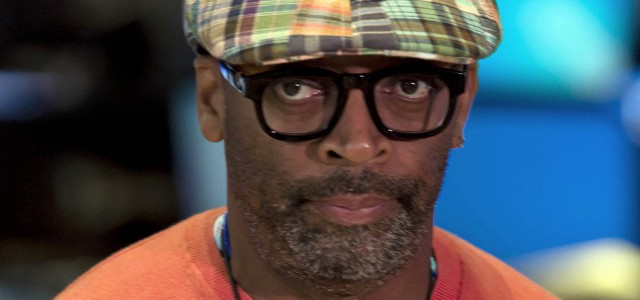WHEN SPIKE LEE went on a profanity-laced tirade about the racial injustice of gentrification, he was not just speaking for himself. He represented a generation of African Americans who have watched rich, often white, homebuyers move into poor, often black neighborhoods, and secure the types of services the previous residents never got.
I’ve chronicled this phenomenon, and in my view, gentrification is driven by economic and racial preferences that undergird nearly every aspect of our society.
“My father’s a great jazz musician. He bought a house in nineteen-motherf—–’-sixty-eight, and the motherf—–’ people moved in last year and called the cops on my father. He’s not — he doesn’t even play electric bass! It’s acoustic! We bought the motherf—–’ house in nineteen-sixty-motherf—–’-eight and now you call the cops? In 2013? Get the f— outta here!” – Spike Lee
From Bed-Stuy to North Philly, and from Crown Heights to Norris Square, poor black and Latino neighborhoods that languished for decades under bank redlining and disinvestment are being recast and renamed for the benefit of richer, whiter residents. Neighborhoods that have been home to generations of black families are now known as “emerging communities.” And whites who move into black neighborhoods have taken to calling themselves urban pioneers, as if black communities are tantamount to wild frontiers where untold dangers await them.So I understood the anger that was expressed in the Spike Lee gentrification rant. In many ways, I share it, but I doubt that I would express it as eloquently as Lee did, so I’ll allow him to speak for himself. Here’s what Lee said during a lecture at Pratt Institute in Brooklyn, where the filmmaker spoke in honor of African American History Month.
“Why does it take an influx of white New Yorkers in the south Bronx, in Harlem, in Bed Stuy, in Crown Heights, for the facilities to get better?” Lee said when an audience member tried to suggest the merits of gentrification.
“The garbage wasn’t picked up every motherf—–’ day when I was living in 165 Washington Park. P.S. 20 was not [a good school]. P.S. 11. Rothschild 294. The police weren’t around. When you see white mothers pushing their babies in strollers, three o’clock in the morning on 125th Street, that must tell you something…
“Then comes the motherf—–’ Christopher Columbus Syndrome,” Lee continued. “You can’t discover this! We been here. You just can’t come and Bogart. There were brothers playing motherf—–’ African drums in Mount Morris Park for 40 years and now they can’t do it anymore because the new inhabitants said the drums are loud. My father’s a great jazz musician. He bought a house in nineteen-motherf—–’-sixty-eight, and the motherf—–’ people moved in last year and called the cops on my father. He’s not — he doesn’t even play electric bass! It’s acoustic! We bought the motherf—–’ house in nineteen-sixty-motherf—–’-eight and now you call the cops? In 2013? Get the f— outta here!
“Nah. You can’t do that. You can’t just come in the neighborhood and start Bogarting and say, like you’re mother—–’ Columbus and kill off the Native Americans. Or what they do in Brazil, what they did to the indigenous people. You have to come with respect. There’s a code. There’s people.”
And you know what? Spike Lee is right. Not only is he right about the effects of gentrification on New York communities. He’s also right about what gentrification is doing to neighborhoods in my native Philadelphia, where large swaths of land are being renamed, rebuilt, and repurposed for richer, whiter populations. Along with the fact that black tenants are being pushed out by rising rents, people of color are being precluded from moving back to improving neighborhoods by skyrocketing housing costs.
Given the legacy of segregation and discrimination that blacks have faced in Philadelphia, New York, Boston, and other northern cities, the trend is disturbing, because it hearkens back to a time when overtly racist policies favored white neighborhoods over black ones. It’s a reminder that in some ways, minority interests still take a backseat to the desires of others.
Of course, there are two sides to the gentrification argument, and those who favor it are also passionate about their feelings. For proof, one need look no further than the house where Spike Lee’s father lives, in the gentrifying area called Fort Greene, in New York.
The day after Spike Lee’s gentrification rant went viral, his father’s house was vandalized with the words, “Do The Right Thing.”
We’ll see if those who are forcing blacks from their communities take heed to their own advice.
CLICK HEREto read an AxisPhilly column on gentrification.
Featured image – July 31, 2013, file photo shows filmmaker Spike Lee being interviewed on the floor of the New York Stock Exchange. Lee has engaged in a brief and lively profanity-laced debate about gentrification of largely black New York City neighborhoods. He made his comments during a Black History Month speech at Pratt Institute in Brooklyn on Wednesday, Feb. 26, 2014. He says gentrification had little regard for people who “have a culture that’s been laid down for generations.” (AP Photo/Richard Drew, File)

Solomon Jones is creator and editor of Solomonjones.com








